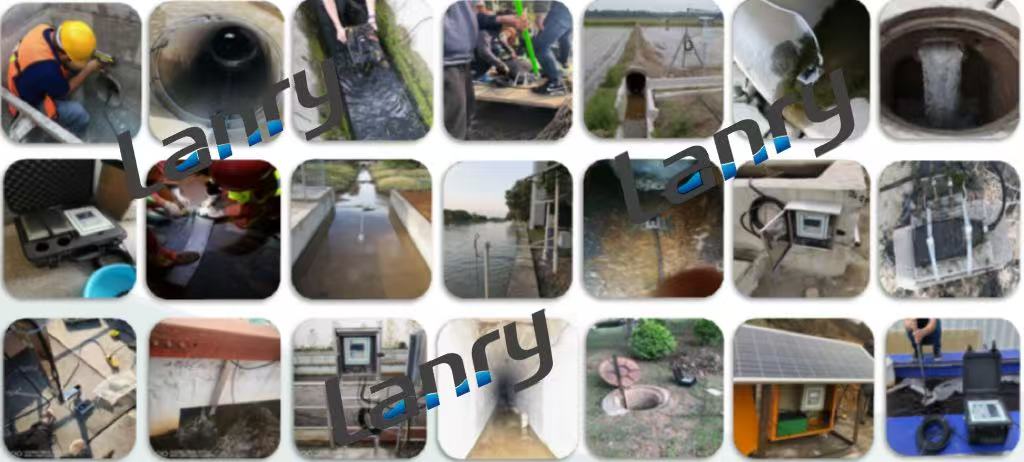Introduction
Open - channel flowmeters are crucial devices for measuring fluid flow rates in channels without enclosing the fluid in a pipe, like in wastewater treatment plants, irrigation systems, and river monitoring. Understanding their pros and cons is essential for appropriate application.
Advantages
Cost - effectiveness
Compared to some closed - pipe flow measurement systems, open - channel flowmeters are often more cost - efficient. For instance, the construction of a simple flume or weir, which are types of open - channel flow measurement structures, can be relatively inexpensive. These basic structures can be made from common materials like concrete or metal, and they don't require elaborate manufacturing processes. This cost - effectiveness makes them suitable for large - scale applications, such as in extensive irrigation networks where the cost of installing more complex flow measurement devices could be prohibitive.
Easy Installation
Installation of open - channel flowmeters is generally straightforward. They can be installed without significant disruption to the existing flow system. For example, a portable ultrasonic open - channel flowmeter can be quickly set up on the side of a channel. There is no need to cut into pipes or make major modifications to the flow path. This ease of installation reduces downtime in operations, which is especially beneficial in systems where continuous flow is important, like in industrial wastewater treatment plants.
Wide Range of Applications
Open - channel flowmeters are adaptable to various fluids and flow conditions. They can measure the flow of water, wastewater, and even some slurries in open channels. In environmental monitoring, they are used to measure river flows, which helps in flood prediction and water resource management. In industrial settings, they can handle the flow of process fluids with different viscosities and impurities. Their ability to function in diverse environments makes them a versatile choice for different industries.
Visual Inspection
Many open - channel flow measurement methods, such as weirs and flumes, allow for visual inspection. Operators can directly observe the flow of the fluid over the structure. This visual access helps in quickly identifying any issues like blockages, irregular flow patterns, or excessive sedimentation. For example, if there is a build - up of debris on a weir, it can be easily seen and removed, ensuring the accurate measurement of flow.
Disadvantages
Limited Accuracy
Open - channel flowmeters often have lower accuracy compared to some closed - pipe flowmeters. Factors like variations in channel geometry, surface roughness, and the presence of turbulence can affect the measurement accuracy. For instance, in a natural river channel, the irregular shape of the riverbed and the presence of rocks and vegetation can cause the flow to be non - uniform, leading to inaccurate readings. The accuracy of open - channel flowmeters is typically in the range of ± 5% to ± 10%, which may not be sufficient for applications that require highly precise flow measurements.
Sensitivity to Environmental Conditions
These flowmeters are highly sensitive to environmental changes. Temperature variations can affect the fluid's density and viscosity, which in turn can impact the flow measurement. In cold climates, ice formation in the channel can disrupt the flow and render the flowmeter inaccurate. Additionally, changes in barometric pressure can influence the flow rate measurement, especially in systems where the flow is near the surface. For example, in an open - channel flowmeter used in a coastal area, changes in atmospheric pressure due to approaching storms can cause errors in the measured flow rate.
Maintenance Requirements
Open - channel flowmeters need regular maintenance. Structures like weirs and flumes can accumulate sediment, debris, and biological growth over time. This build - up can alter the flow characteristics and affect the accuracy of the measurement. For example, in a wastewater treatment plant's open - channel flow system, sludge and other solids can settle on the flume walls, reducing the effective cross - sectional area and leading to incorrect flow readings. Regular cleaning and inspection are necessary to ensure proper operation, which can be time - consuming and costly.
Complex Calibration
Calibrating open - channel flowmeters can be complex. Since the flow characteristics in open channels are highly variable, accurately calibrating the flowmeter to account for these variations is challenging. The calibration process often requires detailed knowledge of the channel geometry, fluid properties, and flow conditions. For example, if a channel has undergone some minor changes in its shape due to erosion, the calibration of the flowmeter needs to be adjusted accordingly. Incorrect calibration can lead to significant errors in flow measurement.
In conclusion, open - channel flowmeters offer several advantages like cost - effectiveness and easy installation, which make them suitable for many applications. However, their limitations in accuracy, sensitivity to the environment, maintenance needs, and complex calibration should be carefully considered when choosing a flow measurement device for a particular application.

Post time: Feb-24-2025

